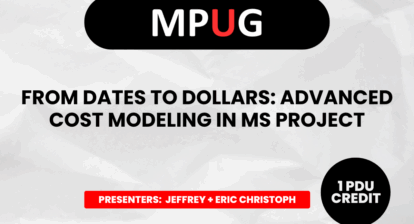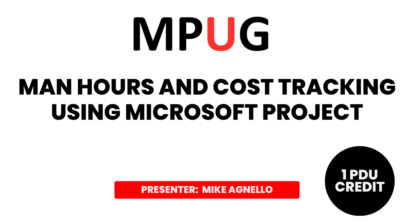-
Keep Project Schedules Simple
- Tasks names to be based on deliverables
- Tasks names to be descriptive nouns and not verbs
- Do not put check lists into schedule. Use note feature for including details
- Do not use Recurring Tasks. Instead, use single task called “Team Member Activities” to track meetings.
- Do not use project interdependency between schedules
-
Require project schedules to follow principals of “Dynamic Schedules”
- All tasks have dependencies
- Estimations are based on work (versus durations)
- Standardize on fixed work
- All Milestone tasks include “Deadline Dates”
- No constraint dates (or Minimum use of constraints)
-
Manage and update project schedules weekly
- Status date set each week
- Update work effort on all tasks using either actual work or percent complete
- Unfinished work is pushed up to status date
-
Standardize the “project options” in Microsoft Project Professional 2010.
There are many default options that should be set as a standard across the organization. Below are few to consider but all options should be reviewed.
- New Tasks are “Manual Schedule” (Recommend “Auto Schedule”)
- Duration is entered in: “Days”
- Work is entered in “Hours”
- Default task type is “Fixed Units”. (Recommend “Fixed Work”)
-
Provide Project Templates that include standard documents and project gates.
For example, if each gate that a project passes require certain documents to be complete, then those deliverables should be included in project schedule.
-
Manage resource workloads by incorporating resource management schedules.
The best option is using the Enterprise Pool within Microsoft Project Server. However, if that is out of your budget then use “Shared Resource” on a file share.
- Create operations schedules or Day-to-Day schedules to capture resource demand for non-project schedules. These schedules should only be a maximum of 12 months and start on your fiscal calendar.
- Single project schedule that projects shared resources for all the other project schedules and saved on a file share
- Common resource pool improves reality of resource workloads.
-
Reporting status to be based on real metrics instead of objective metrics. Project metrics show true status based on baseline and data.
- Requires all project schedules to have a baseline and definition of other baselines within organization
- Allows for more report automation of project schedules
- “Earn Value Schedule” metrics provide real measure of project schedule performance
-
Develop training based on your organization’s standard practices and procedures.
Generic project training is reasonable for learning concepts, but specific training based on your company standards is the best training. There are too many ways to manage schedules and project managers will use them all. The PMO should provide guidance on how your organization wants it done.
-
Monitor all projects in the PMO just like how your project manager monitors
- Reminders to resource submit timesheets or task sheets if past the deadline
- Reminders to project managers to update Status date on schedules if past the deadline
- Audit project schedules to be sure that they are not over detailed.
-
You can’t Google experience. Find a project expert with real experience in implementing project management tools.








Paul Atkinson
Excellent list. I wold argue against “Tasks names to be descriptive nouns and not verbs” and assert that detail task names should be verb and noun. Perform an activity to deliver something. Thanks – that is one of the best lists ever.